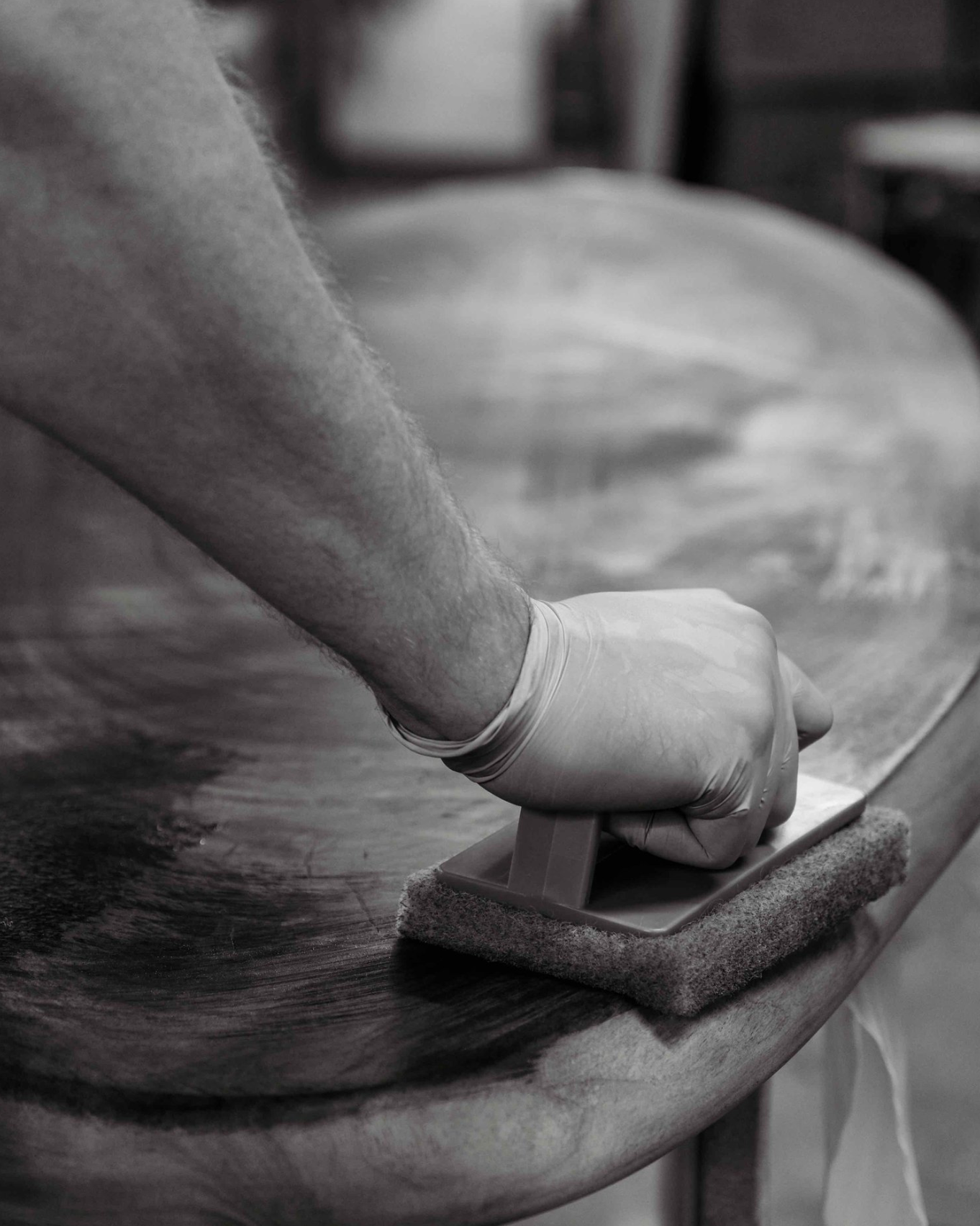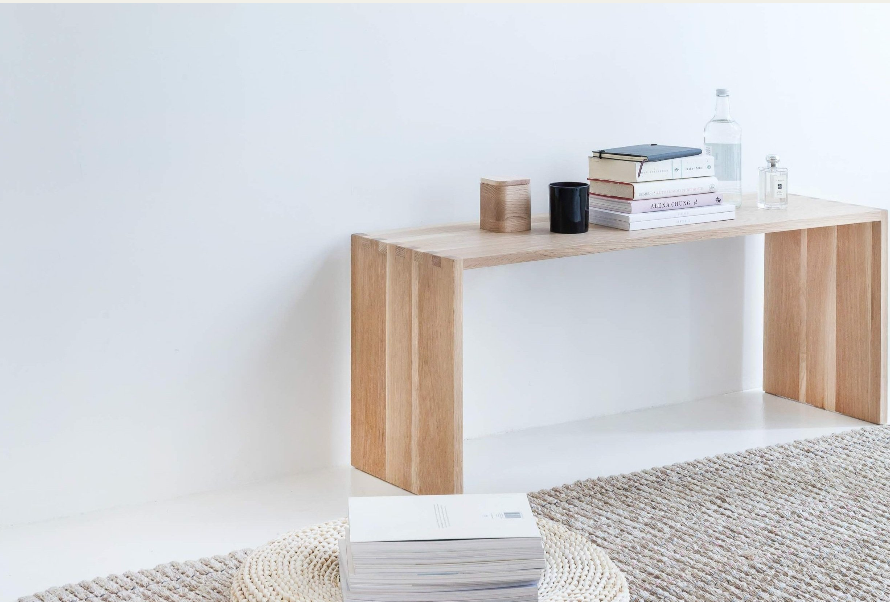What is veneer furniture?
Veneer refers to thin slices of wood glued onto engineered wood and below are a few types of engineered wood.
Engineered wood: Plywood (solid and strong, multilayered, processed), Particle Board (light, inexpensive, unlikely to expand), MDF (flexible for molding and decorations, easy to expand when it gets moistened)
Veneer furniture means gluing thin slices of genuine wood onto engineered wood. With this technique, some brands falsely claim their products to be solid wood furniture. Without judging these practices, this is quite confusing for everyday consumers. For our brand, we don’t classify veneer furniture as solid wood furniture.
Let’s take a solid wood dining table as an example - we normally add a wooden structure underneath the tabletop to prevent misshaping and to support the weight. On the other hand, the wooden structure is often not used for veneer dining tables because of the high stability of ‘engineered’ wood. Hence, when choosing furniture, you can pay more attention to the product descriptions, or even ask whether it is veneer or solid wood.
A simple trick to distinguish between the veneer and solid wood furniture: Veneer furniture has textures with near-regular wooden patterns while solid wood has diverse patterns
‘Veneer is cheaper and better than solid wood.’
This statement is neither right nor wrong. Some European and Japanese furniture brand price their veneer furniture higher than solid wood furniture. Therefore, the price point isn’t the only judging criterion, it also depends on the brand’s reputation, the designs, and the origins of the country.
If you ask us whether veneer furniture is good or not, if you don’t factor in the cost, we think it all depends on your practical needs. For example, most restaurants use veneer tables because, unlike solid wood furniture, the sticker-like properties can withstand liquids and moisture. Also, the veneer is usually machine-made whereas solid wood furniture is handmade, and inevitably there will be flaws. If you’re a perfectionist looking for unity and do not have the time and effort to take care of your furniture, we strongly suggest veneer furniture. Buying solid wood furniture is definitely an investment, buyers often wish to pass down their ‘heirloom’.
什麼是貼皮/飾皮傢俱?
實木板材之後就是人造木板,以下是市面上的人造木板粗略分類。
人造木板:夾板/Plywood (堅固,以多塊實木拼貼而成,經過加工),纖維板/蔗揸板/夥粒板/Particale Board (不內潮, 輕巧, 成本低),中纖板/MDF (易於塑型,花邊,雕花,遇水發漲)
人造木板的出現,又引伸出貼皮或飾面傢具 (Veneer),即是於人造木板表面貼上仿木皮或真木皮。有些商家會在人造木板貼上真木皮,聲稱是實木傢俱出售。我們不評論這做法是不正確,但對消息者無疑是造成混亂,所以在我們立場貼皮傢俱不視作實木傢俱。
經驗分享:以實木餐桌為例,為了防止木材變形及承重,餐桌底下會加上木撐作為支撐。反之貼實木皮的餐桌中間是穩定性高的人造木板,所以不需要多加木撐去防止木材變形。所以在選購餐桌時,如果產品標明是實木桌下又沒有加上木撐,那不妨詢問一下是實木還是貼實木皮
簡單的判斷貼皮和實木傢俱:
貼皮家具的木紋花色較統一,實木家具則有不同的木紋。
貼皮比實木好或比較便宜?
這個說法又不完全正確。以一些北歐或日本品牌為例,貼皮或人造木板傢具價格反而比實木傢俱昂貴,所以價格不是唯一指標,還取決於品牌名氣,設計,產地等因素。
若你問貼皮傢具好不好,是不是廉價,我覺得一切都視乎你的需要。例如餐廳都多數採用貼皮餐桌,因為餐桌經常沾水受冷受熱,貼皮像是一層貼紙,防水防潮,那是有塗裝的實木都不能像都貼皮般絲毫無損。而貼皮是用機器生產,而實木傢俱多以人手製作,不能避免會有木材的天然瑕疵。如果你是追求一致性的完美主義者,又而沒有時間保養實木傢具,由衷建議倒不如購買貼皮傢具更實際。始終實木傢具是一門投資,需要心機保養,惜木之人會希望每件傢具可以代代相傳,隨著時間推移越用越有味道。





